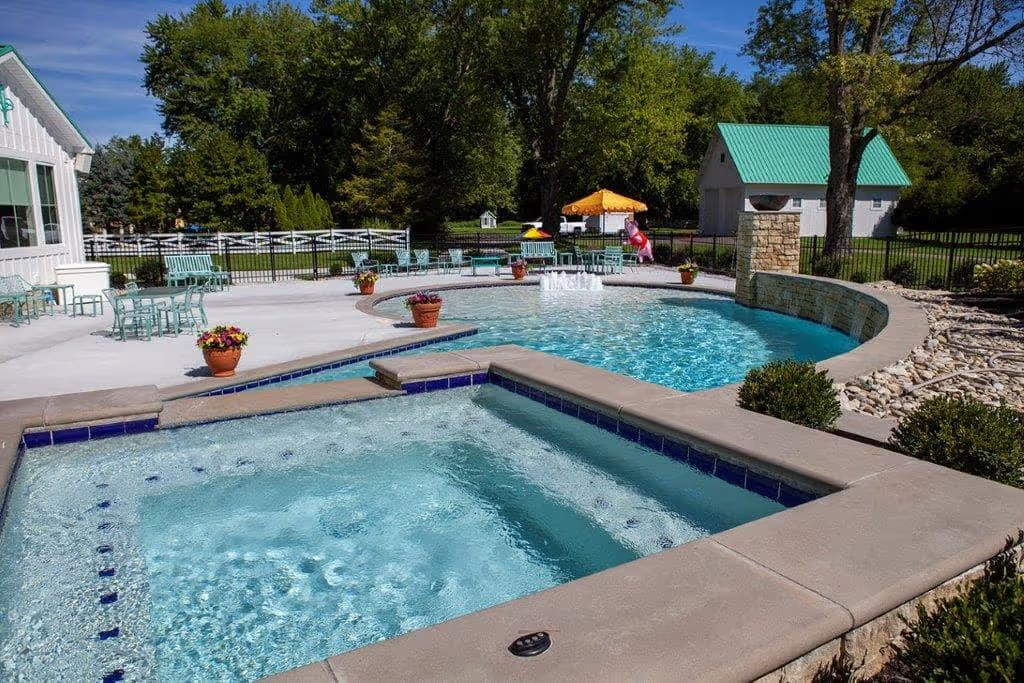- Stone Center
- Blog
Retaining Wall Types: Find the Best Fit for Your Project
23/7/2025
2/17/2025
Retaining Wall Types: Find the Best Fit for Your Project
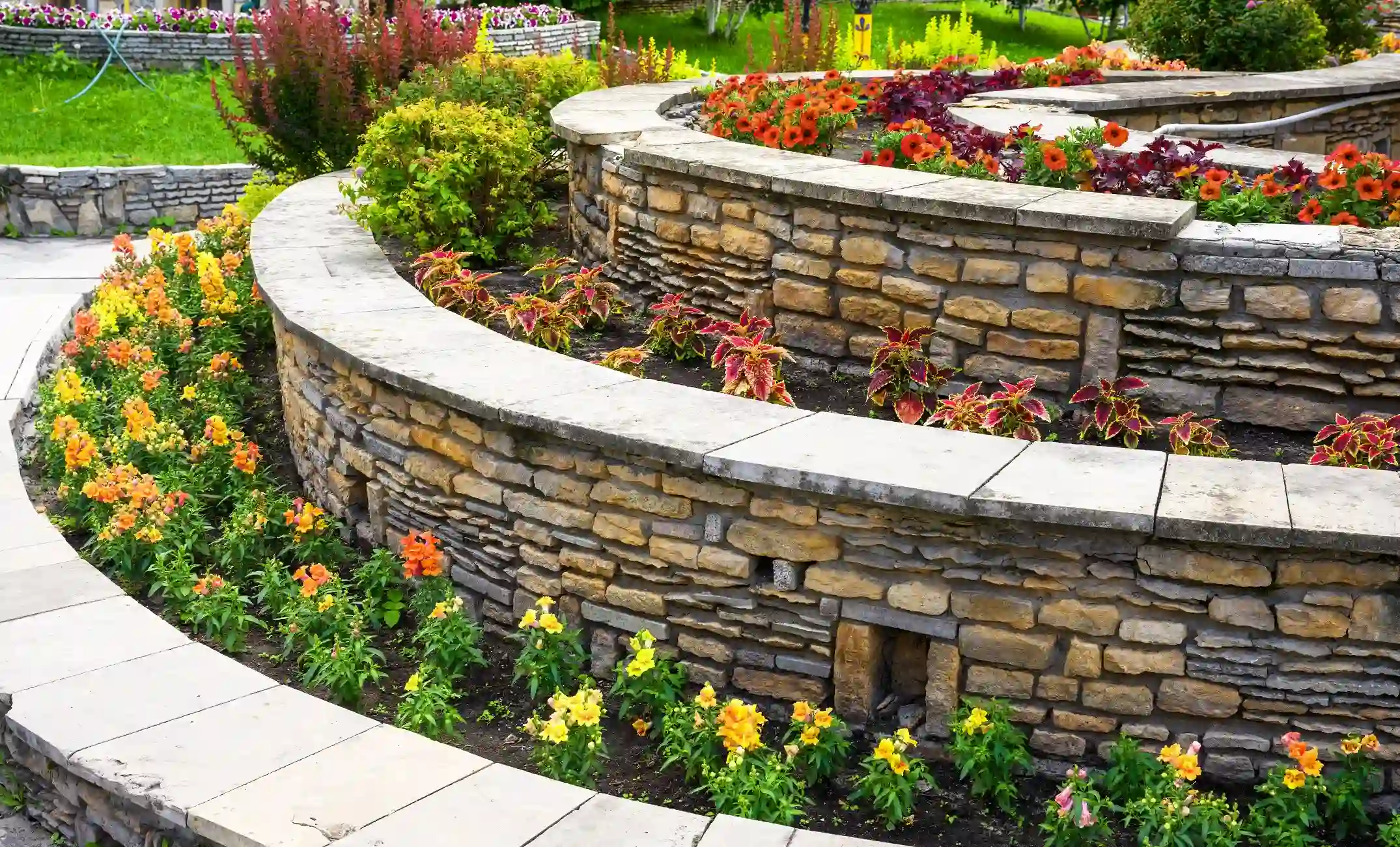
Retaining walls are more than just structural elements; they are indispensable components in modern landscaping and construction. Designed to hold back soil or water, they transform sloped or uneven terrain into functional spaces.
Today, retaining walls come in several types and can be constructed using different materials, including natural outcropping stones. Whether you're a landscape architect or a homeowner looking to improve your yard, this guide by Stone Center experts offers invaluable insights to help you make informed decisions.
What Is a Retaining Wall?
Retaining walls are structural elements that stabilize soil, manage water flow, and create usable flat spaces on sloped or uneven terrain. Unlike purely decorative landscaping walls, retaining walls are the perfect blend of functionality with design. They utilize diverse wall materials like concrete, stone, or wood as these are strong yet aesthetically appealing materials.
Why might you need a retaining wall? These are versatile structures that address key challenges in landscaping and construction. Here are some common functions:
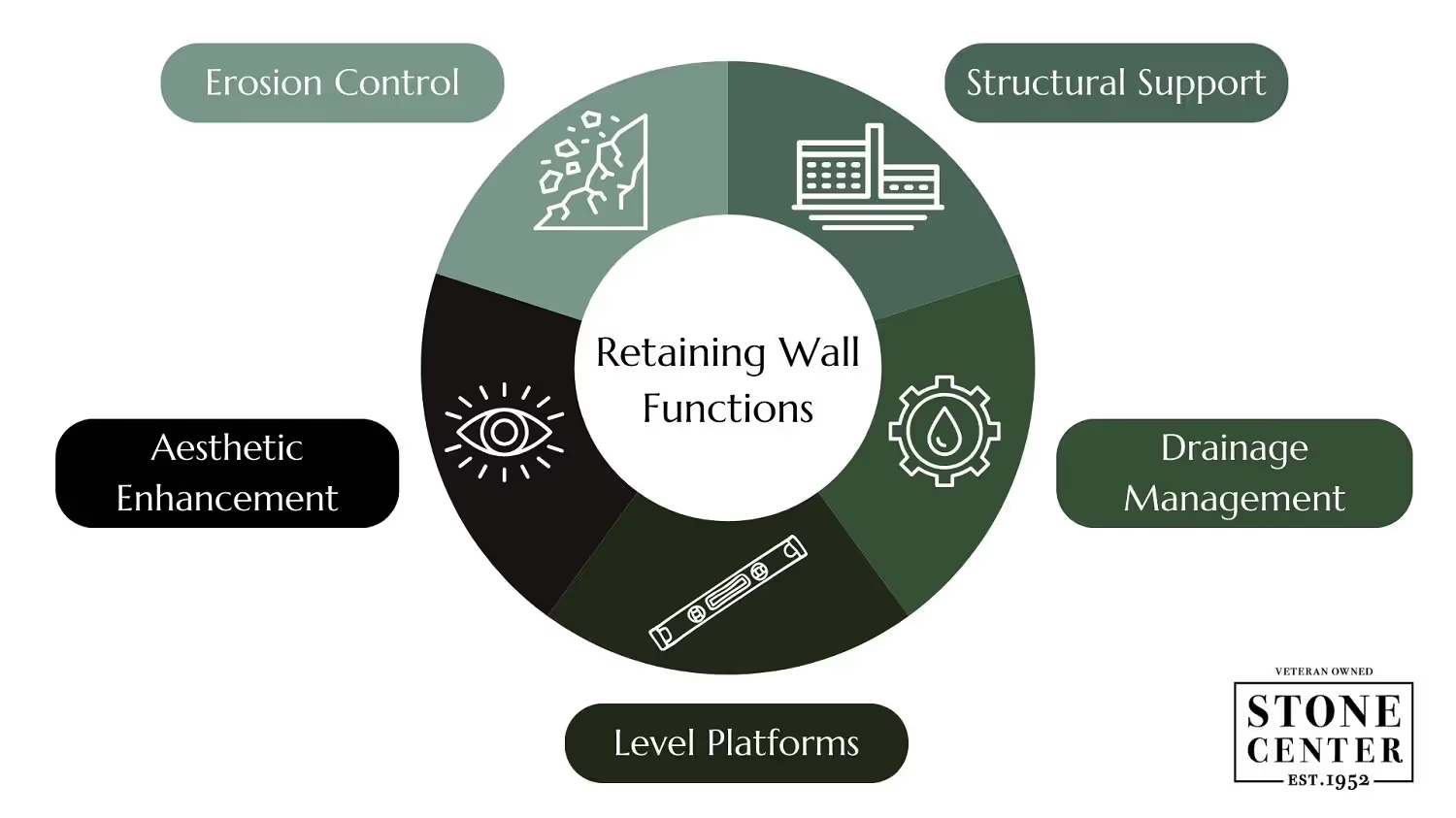
- Erosion control: Keep soil from sliding or collapsing on steep or uneven terrain.
- Structural support: Protect nearby buildings or roads by counteracting the earth’s pressure.
- Drainage management: Prevent water buildup with integrated drainage systems to reduce pressure and damage.
- Creating level platforms: Turn slopes into flat, buildable spaces, making construction easier.
- Aesthetic enhancement: Utilizing retaining wall materials like concrete or stone ensures they are strong and aesthetically appealing.
The Most Common Types of Retaining Walls
The most common types of retaining walls act as the backbone of many projects, offering proven solutions for stability and soil retention. Let’s dive into their construction and standout features to understand what makes each type indispensable.
Gravity Walls
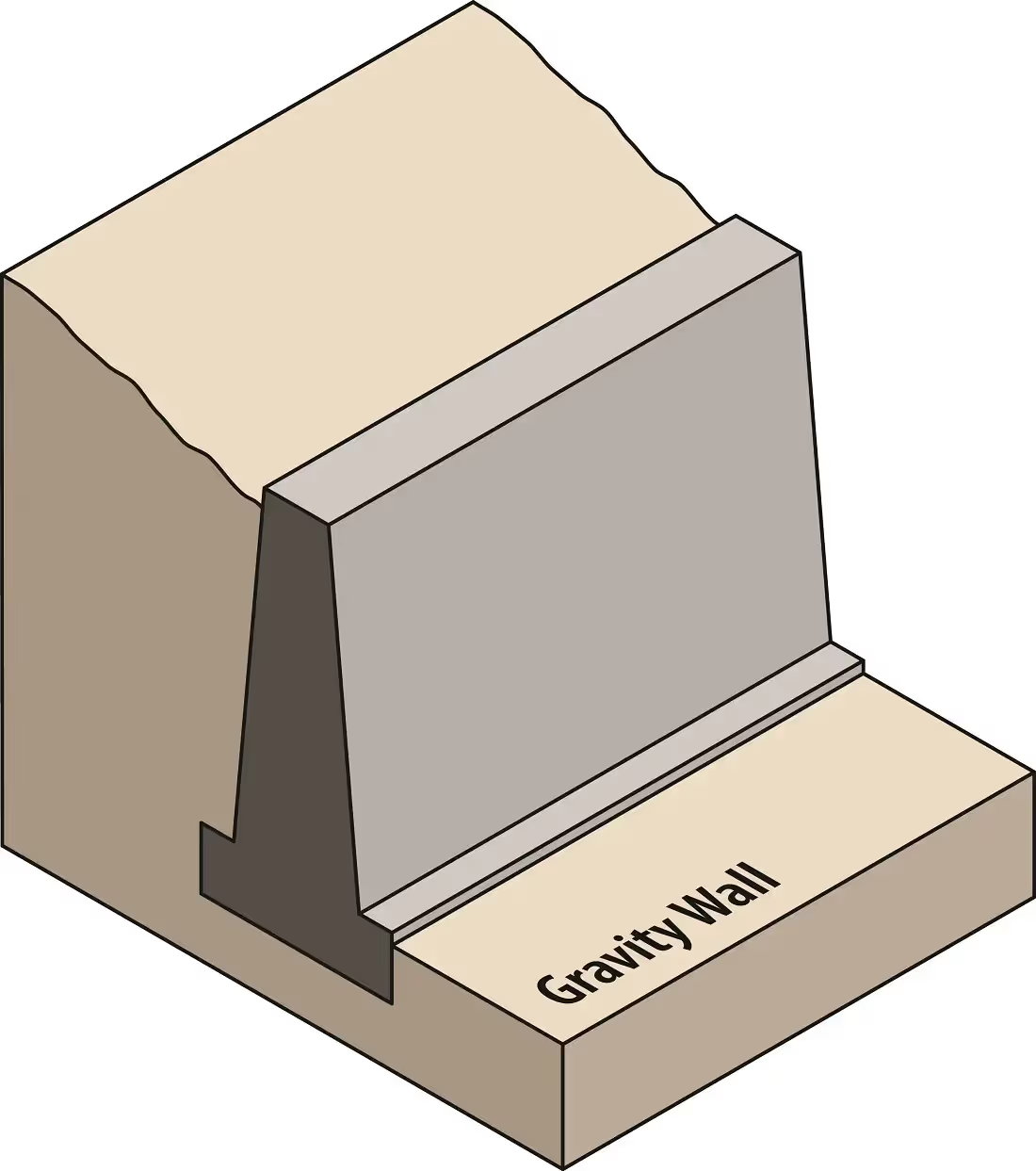
Gravity retaining walls rely on their mass and weight to resist the lateral pressure of the soil behind them. These walls are typically stone, concrete, or masonry retaining walls. Their design often incorporates a tapered shape, with the base being wider to counteract the increased pressure at lower levels. These walls are best suited for projects where the wall height doesn’t exceed 10 feet, as taller structures need significantly more material to maintain stability.
Note: Gravity walls are a great choice for residential landscaping because of their simple construction and ability to integrate natural stone for an appealing aesthetic.
Cantilever Walls
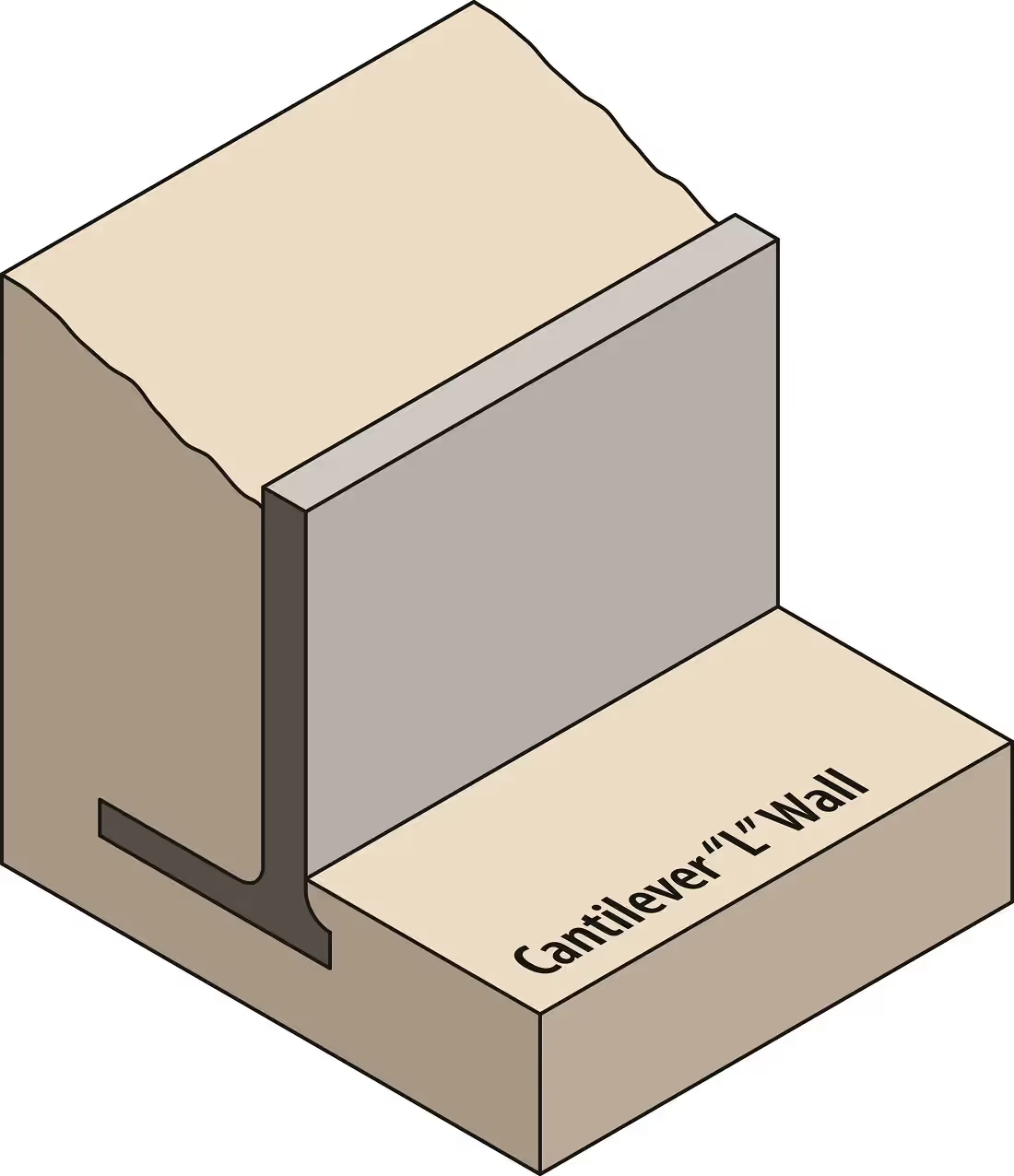
Cantilever retaining walls, with their "L" or "inverted T" shape, combine a vertical stem and a base slab that extends outward (heel) and inward (toe) into the soil. The stem resists lateral earth pressure, while the base slab, often a reinforced concrete footing, helps create stability. Cantilever walls are typically made from poured concrete walls or reinforced concrete and they’re ideal for highways and commercial developments due to their strength and efficiency.
Note: Cantilever designs use less material than gravity walls, so they’re more efficient for walls up to 30 feet tall.
Anchored Walls
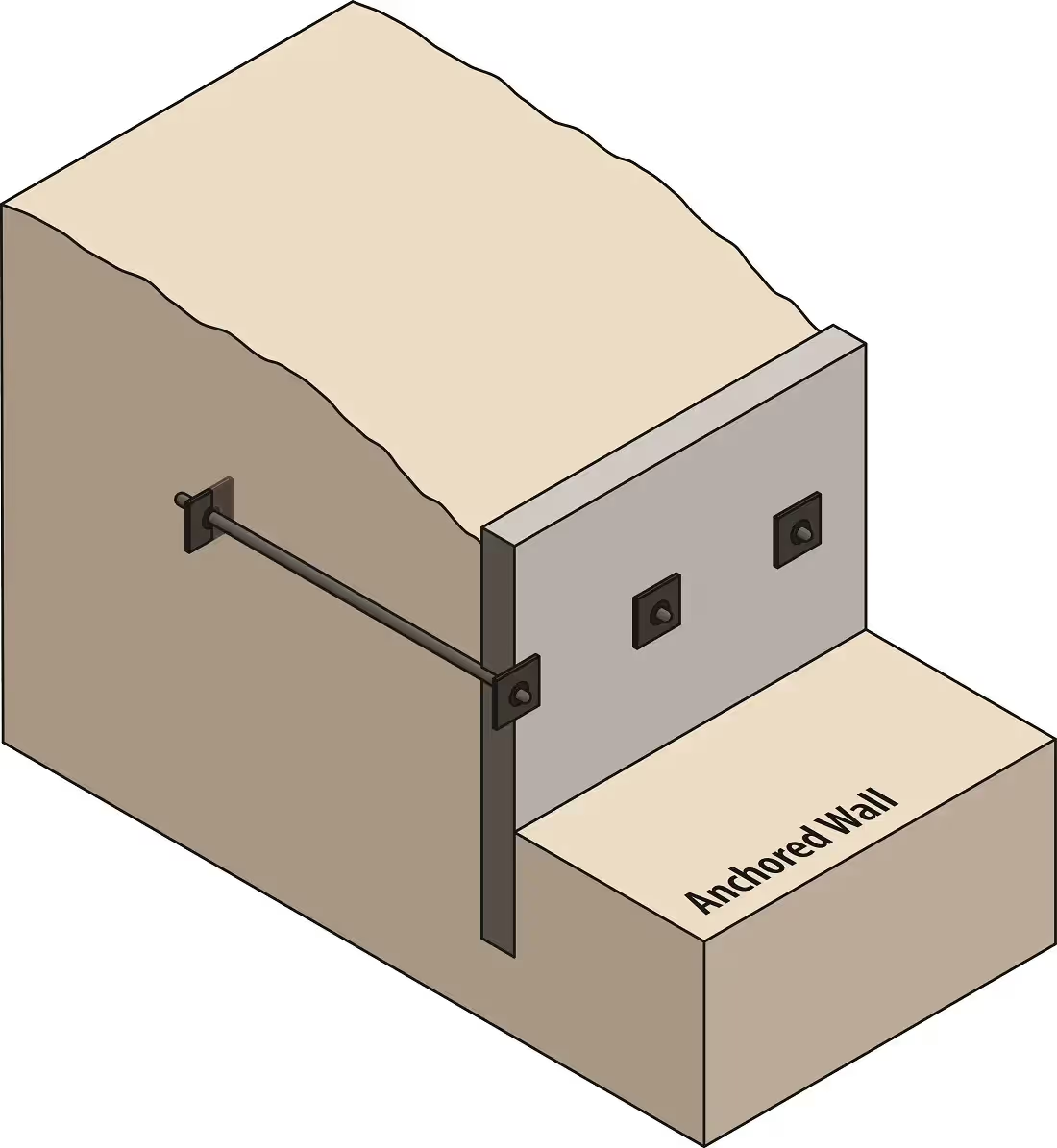
As their name suggests, anchored retaining walls use anchors (typically steel rods or cables) embedded in the soil behind the wall to provide additional stability and resist lateral earth pressure. This allows for thinner walls than gravity or cantilever designs, making them ideal when sites are low on space. The walls themselves can be made from a variety of materials such as concrete, masonry, or even sheet piling.
Advice: Regular maintenance is key to avoiding retaining wall failure — be sure to check anchors periodically to ensure they’re still performing as they should.
Piling Walls
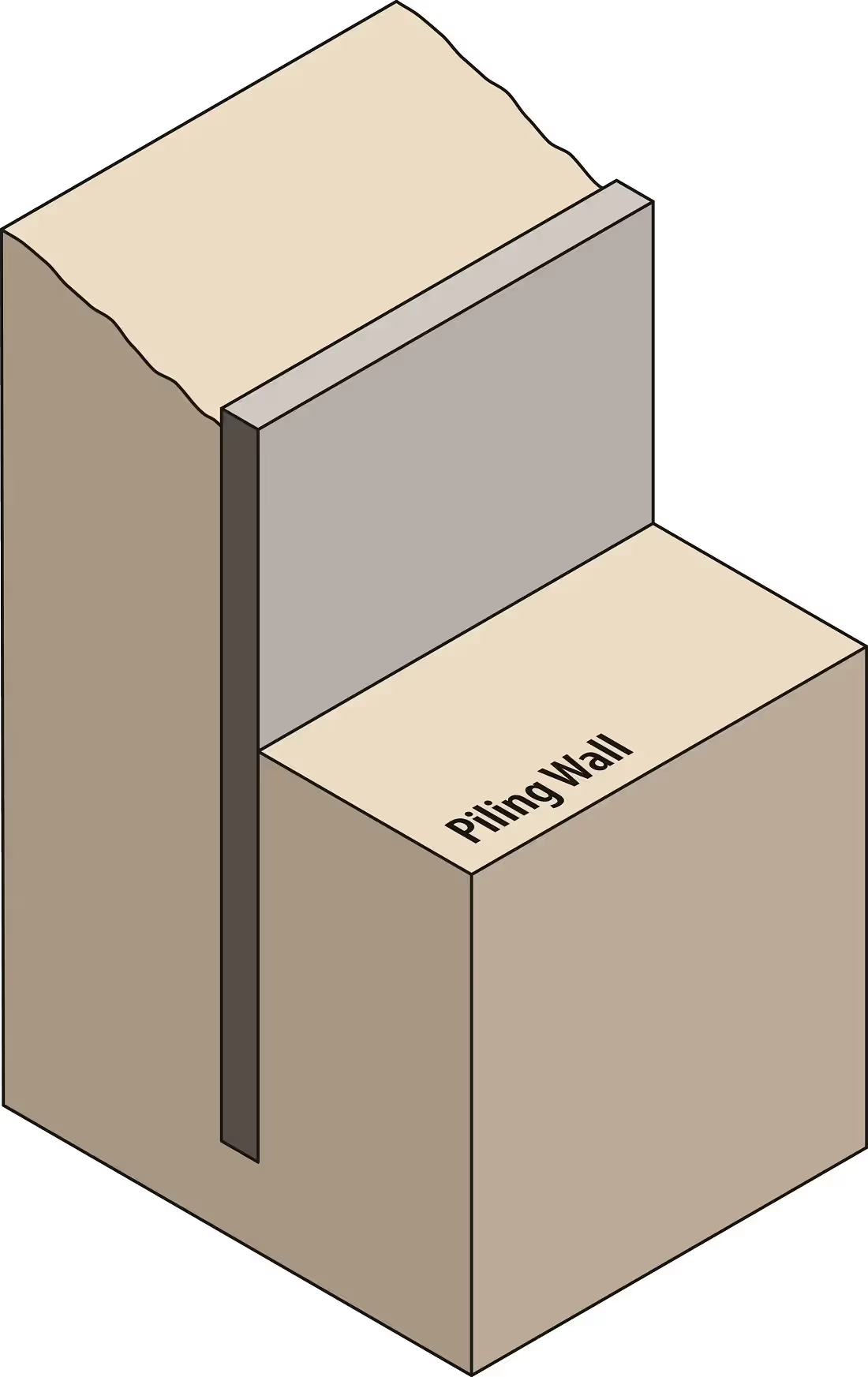
Piling retaining walls are constructed by driving vertical posts, or "piles," deep into the ground to counteract the soil’s lateral pressure. These piles are typically made of materials like steel, concrete, or timber and can be installed as individual elements or pile retaining walls and sheet systems for added strength. The piles rely on their depth and friction within the soil to maintain stability.
Note: While economical for medium heights, sheet pile retaining walls aren’t ideal for heavy loads or rocky terrain.
Other Types of Retaining Walls
If you didn’t see a type of retaining wall that caught your eye, no worries. There are more options as modern engineering has introduced additional types. These include gabion, MSE, counterfort, and hybrid walls that cater to specialized requirements. These walls provide flexibility, aesthetic options, and innovative solutions for complex terrains.
Gabion Walls

Gabion walls consist of stacked wire mesh boxes filled with rocks or coarse materials. Known for excellent drainage and adaptability to uneven terrain, they’re widely used for erosion control, slope stabilization, and landscaping. They have a modular design that allows for flexibility in shape and size, so they’re a common choice along highways, rivers, or landslide-prone areas. Learn more insights about gabion walls in our detailed article!
Advice: Use high-quality, rust-resistant wire mesh to extend the wall's lifespan.
Mechanically Stabilized Earth (MSE) Walls

MSE walls incorporate layers of soil reinforced with geosynthetic materials such as geogrids or metallic strips. The reinforced soil acts as a stable mass, supported by a facing system of concrete panels or blocks. These walls are commonly used in infrastructure projects like highway embankments because they are cost-effective and can handle high loads.
Advice: Use MSE walls for projects needing flexibility in design and large retaining heights.
Counterfort Walls

This type adds triangular supports, called counterforts, to the back of a reinforced concrete wall. These supports help distribute the forces more effectively, so this type of wall is ideal for heights over 25 feet. They’re most commonly used in industrial or large-scale projects.
Note: To maximize their effectiveness, the counterforts must be spaced evenly, typically at intervals equal to or slightly larger than half the wall’s height.
Hybrid Walls

Hybrid retaining walls are all unique as they combine the best features of different designs to meet specific needs. For example, a hybrid wall might use MSE for soil reinforcement but add gabion facings for better drainage and aesthetics. Although these walls are adaptable, they require careful planning and expert engineering to ensure all components work together within a cohesive retaining wall design.
Note: Hybrid walls are not a one-size-fits-all solution. To be successful, they require careful planning and expert engineering to ensure that all components are working together properly.
Retaining Walls: Comparing and Choosing the Right Type
There are plenty of options at your fingertips, but you still may be unsure which type is best for you. Finding the perfect retaining wall can be a simple process that starts with evaluating key factors like cost, materials, and application.
Whether you’re stabilizing a garden or tackling an industrial project, each type of wall is suited to specific needs. We’ve provided a table below that provides an initial consideration of wall types based on common applications and costs, helping you narrow down your options.
For Ohio homeowners or contractors planning a retaining wall for their yard or garden, be sure to understand local costs. Learn more about what factors influence retaining wall costs in your area.
Once you’ve chosen the type that aligns with your project’s application and site conditions, you can focus on details like height requirements, material choices, and additional features to fine-tune your design and confirm it meets all your needs.
DIY or Hire a Pro? Making the Right Choice.
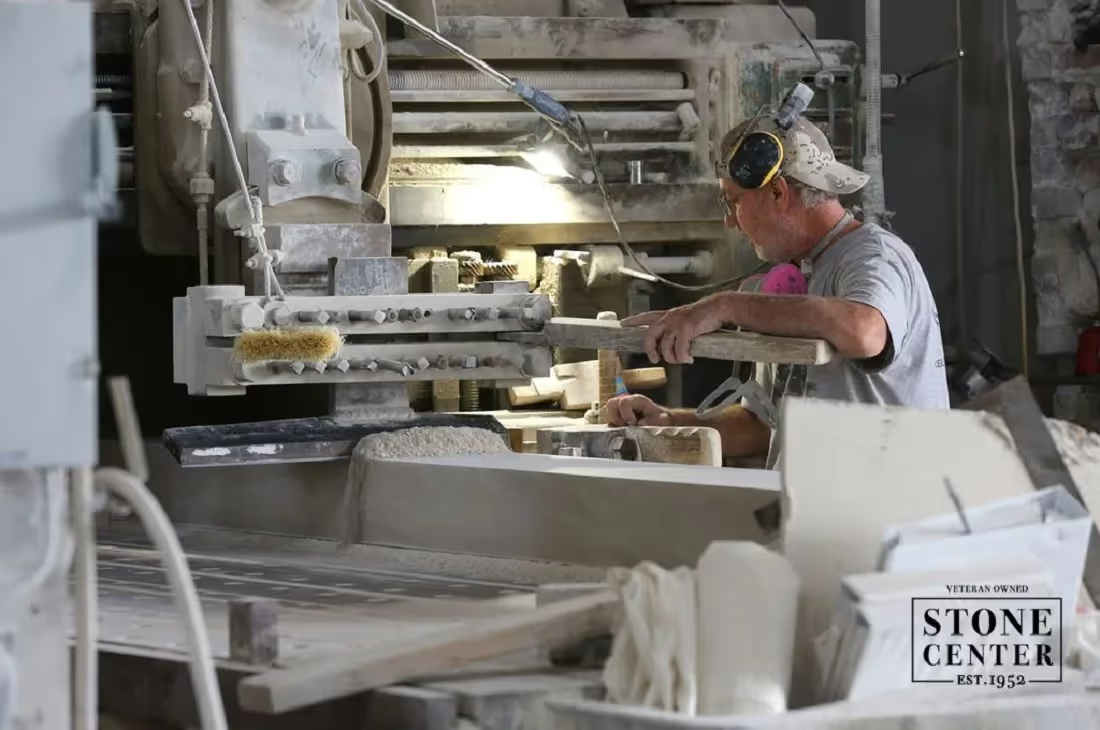
Thinking of building your own retaining wall? With the right tools and materials, a DIY project is within reach. It can be both rewarding and cost-effective. Ideally, a DIY approach is ideal for walls under 4 feet using interlocking concrete blocks, which are easy to handle. Check our guide on DIY Installation of a retaining wall to learn the step-by-step instructions to help you bring your vision to life.
For taller, more complex walls or those requiring special materials like reinforced concrete or gabion systems, it’s best to call a professional. They’ll handle the engineering, drainage, and permits to ensure the wall is safe, durable, and up to code. When in doubt, leave the heavy lifting to the experts like ours at Stone Center!
Your Dream Retaining Wall Begins with Quality Materials
Retaining walls are versatile structures that are stable, functional, and aesthetically pleasing across various applications. From gravity retaining walls to hybrid systems, each type serves unique needs depending on materials, height, and site conditions.
Looking to start your new retaining wall project? You’re at the right place. At Stone Center, we provide premium stone products tailored to your needs. Since 1952, we’ve been proudly serving our community with exceptional service. Our team is knowledgeable and passionate about helping you execute your retaining wall project. Contact us today to learn how our products can help create durable and beautiful retaining wall structures for your landscape or infrastructure project.
FAQ
.avif)
Jon, the owner of Stone Center, is a knowledgeable expert in natural stone products, specializing in various types of stone for landscaping and architectural projects. Passionate about promoting the beauty and versatility of natural stone, Jon aims to use these blogs to inspire readers with creative ideas to upgrade their homes.
How much does it cost to get a stone restored?
How much you end up spending to restore stone varies on the type of stone, the technique, and the stone’s current condition. Stone in good condition will cost less to restore, whereas stone that has a lot of wear and tear may require a longer restoration.







.avif)
.avif)

.avif)
